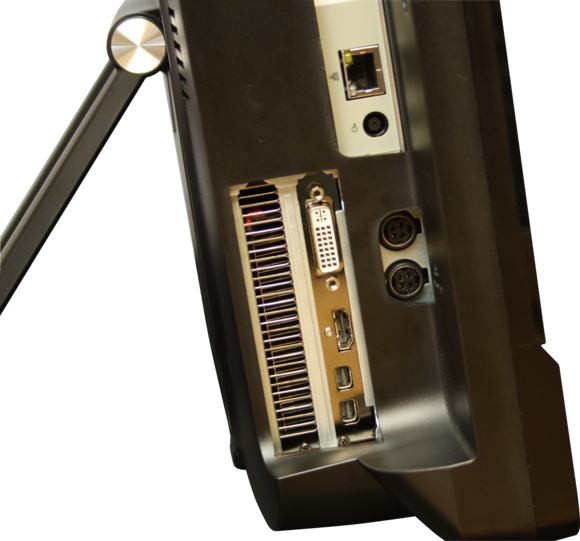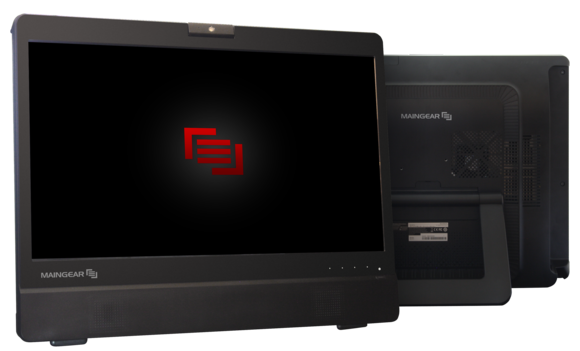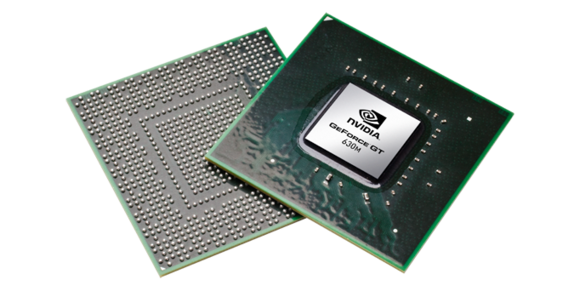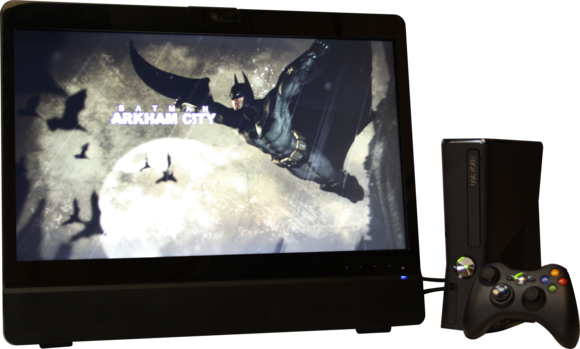I may look pretty on the surface, and I may be practical, but my gaming performance is almost always disappointing. I am the all-in-one desktop PC.
Duc Dang, Toshiba's Senior Product Manager, says all-in-one PC sales have grown 32 percent in the last couple of years, making them a major focus in the evolving PC ecosystem. The success should come as no surprise, as all-in-ones can make ideal family machines. By integrating a display and PC in a single, slender chassis, they eliminate desk clutter and reach relatively low prices.
Unfortunately, however, most all-in-ones do so at the expense of gaming performance—which is not only back-burnered, but usually taken off the stove completely. Cheap, integrated graphics and low-performance CPUs may be perfect for super-thin all-in-ones (which, from an engineering standpoint, have more in common with laptops than desktops), but they don't foster great PC gaming.
Yet there is hope for all-in-ones thanks to one manufacturer serving a very vocal, niche market.
The first of its kind
Maingear's Alpha 24 doesn't look like your typical sleek and sexy all-in-one PC. It has much more, well, "desk presence" thanks to a bulkier chassis and multiple power adapters, which are necessary to fuel the insane graphics hardware locked within."As the popularity of all-in-ones has increased over the last few years, PC manufacturers started to create thinner and more stylish designs, but also used mobile parts," says Chris Morley, Maingear's Chief Technology Officer. "We saw an opportunity with the Alpha 24 to put together an all-in-one that offers high-performance desktop components, and the ability to upgrade for future-proofing, which appeals to PC gamers."
 MAINGEAR
MAINGEARThat GTX 680 is not only one of the most powerful GPUs around, it's also a full desktop video card that actually requires not one but two extra power cables (for a total of three cables for the entire PC). The Nvidia card (and other high-end components) forced Maingear to engineer a much wider chassis than what you'll find in a typical all-in-one, but the greater chassis width helps alleviate heating issues. "This isn't the solution most mainstream users would want to see," says Morley, "but PC gamers care about performance, and we know the majority of our customer base wouldn't mind."
In addition to the GTX 680, our Alpha 24 review unit has a 24-inch, LED backlit, two-point touch screen; an Intel Core i7-3770K processor; 16GB of DDR3-1333 RAM; and a huge 480GB SSD. In essence, it's a serious desktop gaming machine with a built-in display.
 MAINGEAR
MAINGEARA full review of the Alpha 24 will be coming soon.
Why do all-in-ones suck at gaming?
So, yes, it can be done: A computer built into a monitor can achieve killer performance in even the most demanding games. So why are we seeing so many all-in-one companies struggle to achieve even the most basic frame rates?Dang says hardcore PC gaming is a relatively small, niche market, and most all-in-one manufacturers aren't making gaming performance a focus at this point. Indeed, most companies are striving to make their all-in-ones as sleek and thin as possible, and this presents engineering challenges. The machines simply don't have the interior space to accommodate desktop-grade graphics, let alone their accompanying cooling solutions. As a result, all-in-ones are often loaded with GPUs from the laptop parts bins—integrated graphics capable of only choppy, low-res game play.

However, even with this discrete graphics solution, the machine couldn't reach more than 20 frames per second in any of our WorldBench 8 gaming tests.
Now, not all discrete mobile GPUs will dash your hopes and dreams. The Nvidia GeForce GTX 680M is the mobile version of one of the most powerful graphics card available today, and is able to play the latest and greatest games well beyond the coveted 60 frames per second mark. Unfortunately, though, you'll be hard-pressed to find a GTX 680M in an all-in-one. They are reserved for hardcore gaming laptops, which can top $3,000.

The lack of internal space also creates a domino effect that limits a company's ability to stuff its all-in-ones with hardcore components. Large power supplies won't fit inside the machines, so manufacturers instead use external power adapters. These external power bricks, however, can't supply all the juice necessary for top-notch components (let's not forget the Alpha 24's video card requires three separate power cables).
And, of course, just like notebooks, all-in-ones are equipped with specialized integrated components that save space, but can't be upgraded for newer, faster parts. Yes, in some cases, RAM and hard drives can be replaced, but these upgrades will only take you so far. Your all-in-one system stays the same, while your games' demand for performance continues to grow.
 MAINGEAR
MAINGEARCompromise until help arrives
Darren Gladstone, the "blogger-in-chief" for HP's The Next Bench blog, believes that it's just a matter of time before more all-in-ones are capable of serious PC gaming. In particular, he's excited to see what the upcoming Haswell processors will do for games in typically underpowered systems. Haswell is expected to double the integrated graphics power of Ivy Bridge's HD4000, while still remaining energy efficient and cool.Until Haswell or some other hardware breakthrough arrives, Gladstone feels that there could be some compromise on the gamer's end. Experimenting with your graphics settings will lead to playable frame rates in any adequate all-in-one, he says. His first strategy is to lower overall resolution; this will let you retain high-end effect settings. Next, you can tweak minor, individual graphics settings until you find a settings profile that runs at an acceptable frame rate.

Sign up here with your email

ConversionConversion EmoticonEmoticon